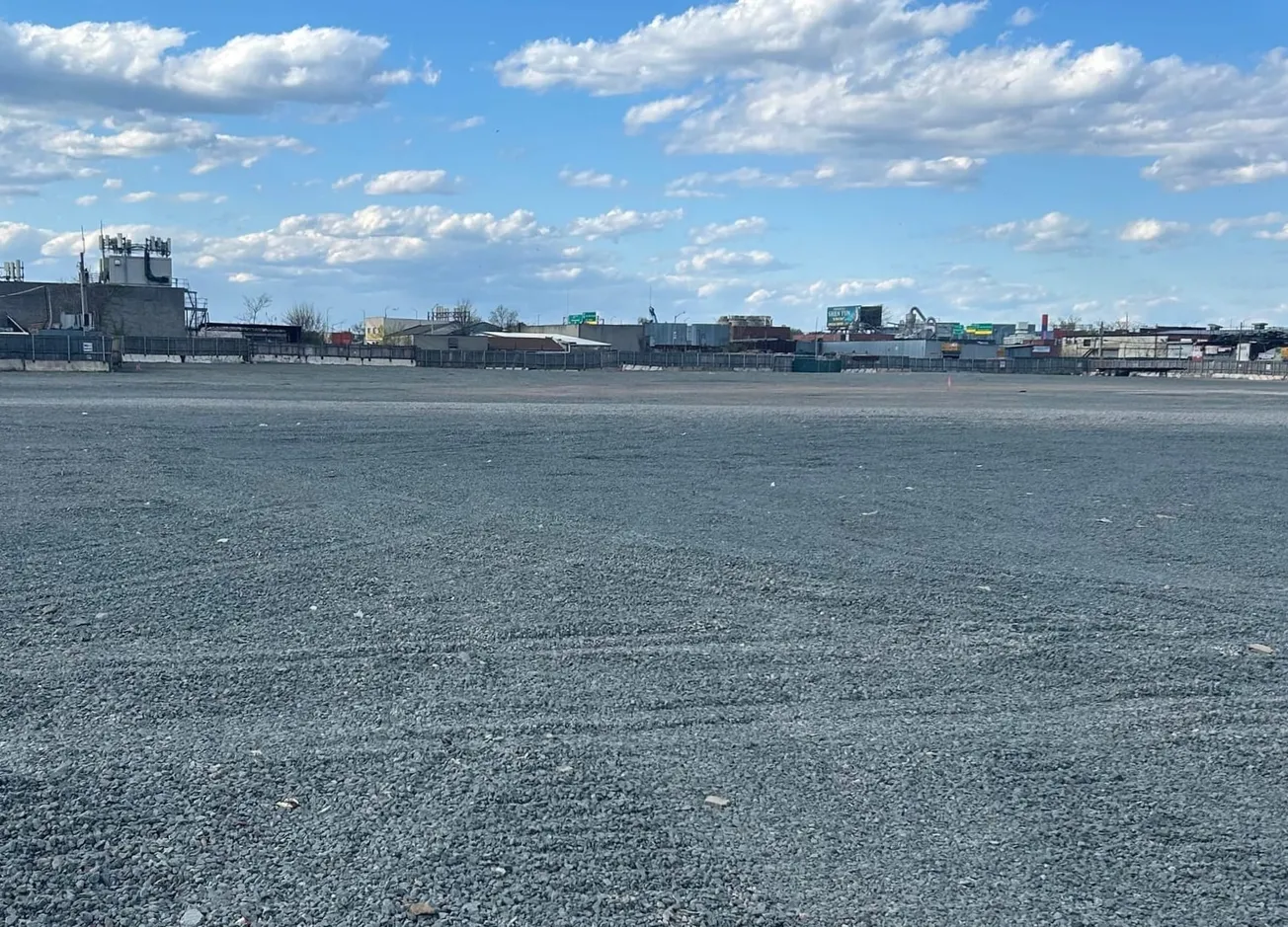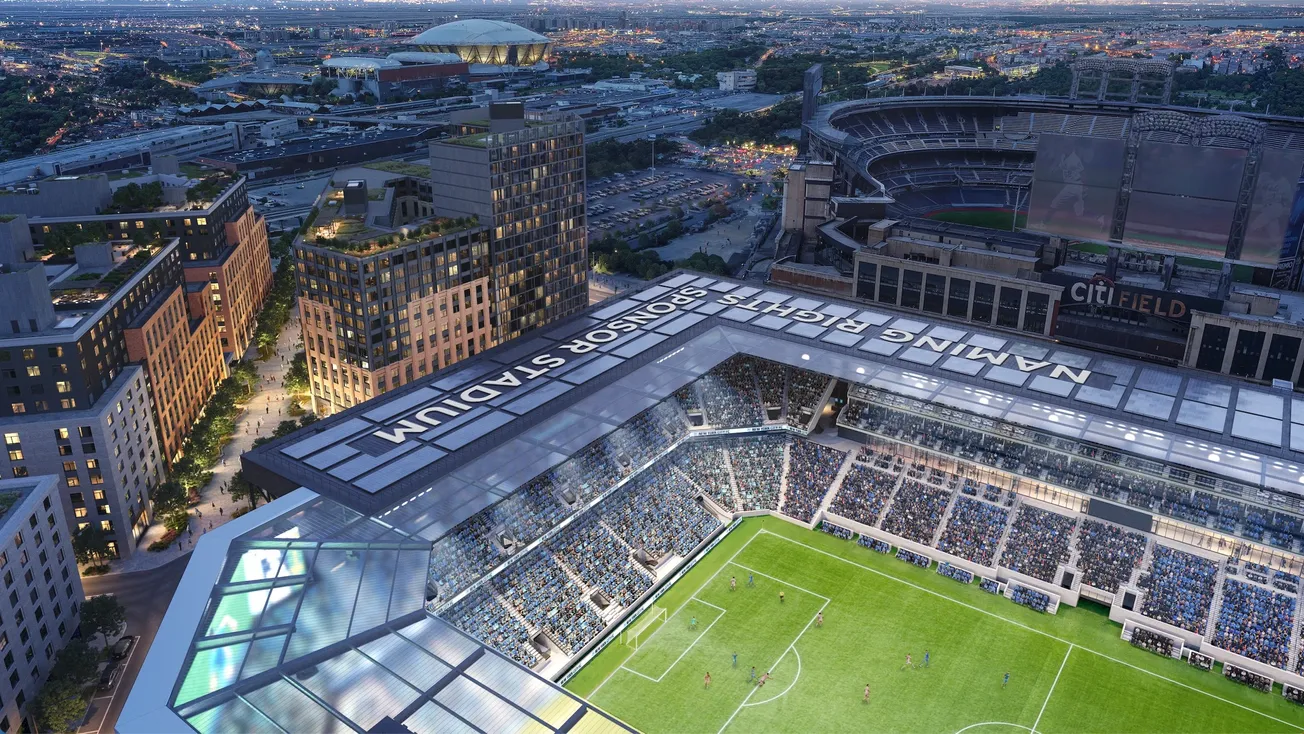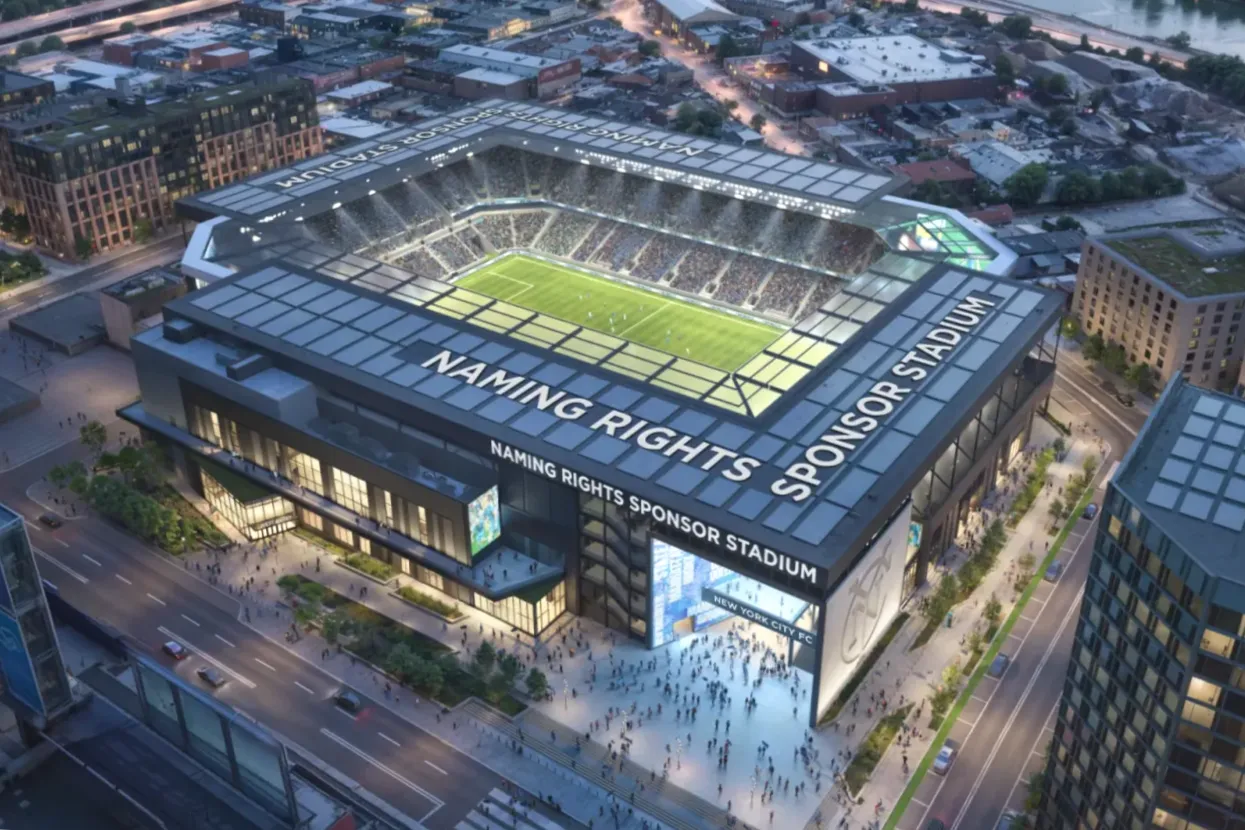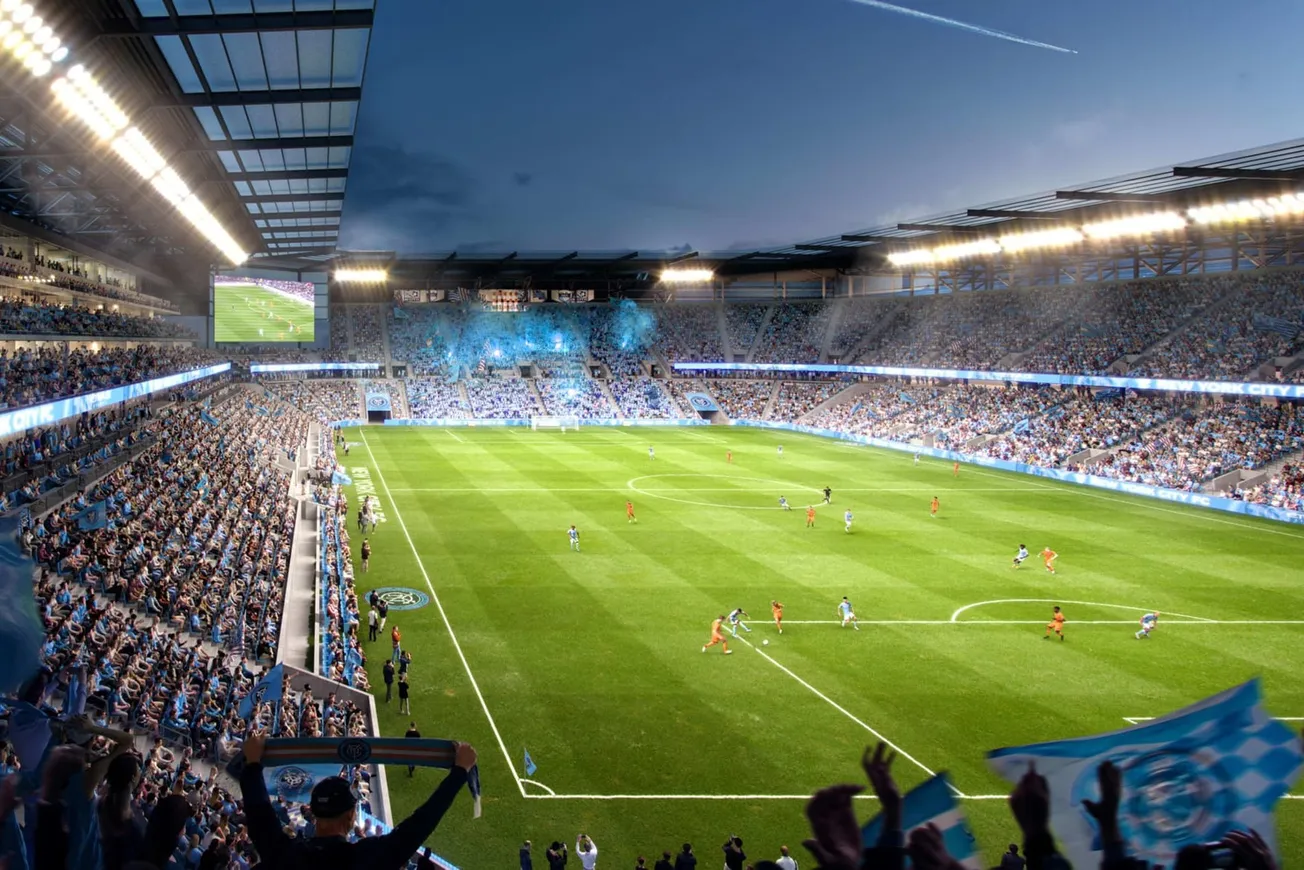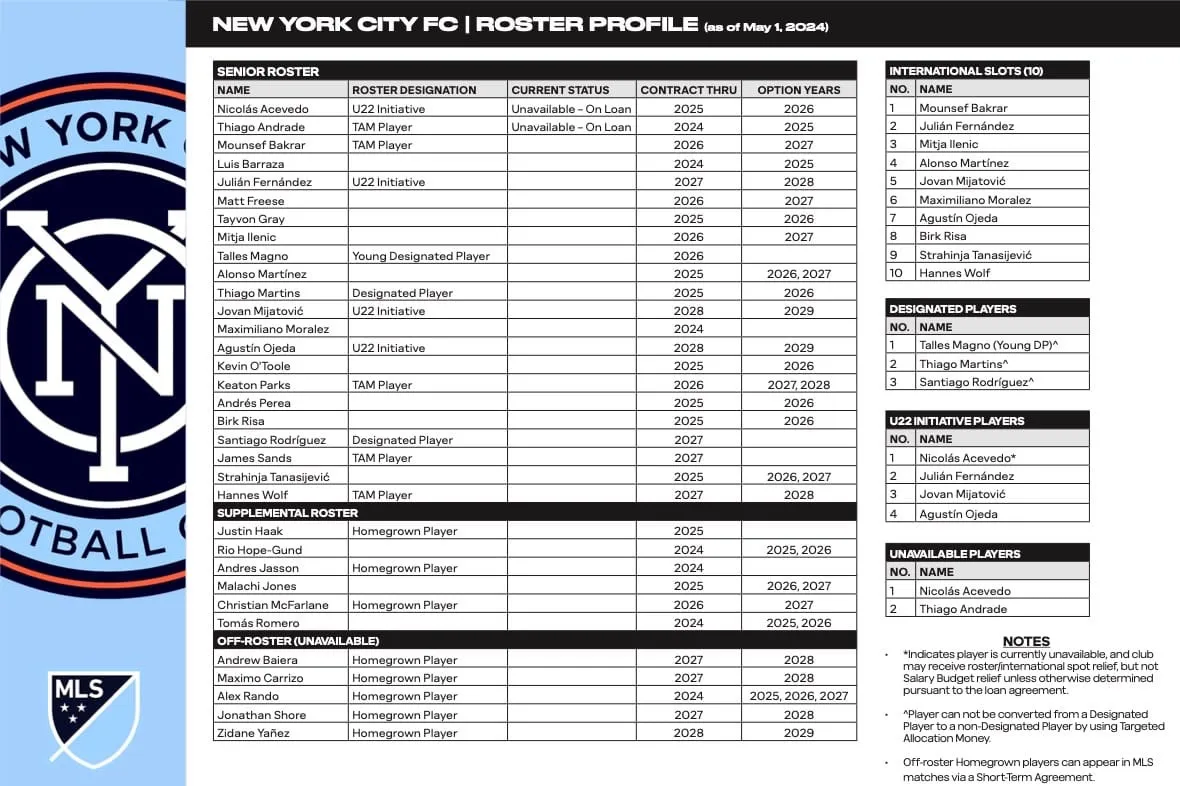You walk out onto an empty plot of land covered in gravel and come face-to-face with decades of dreams soon to be fulfilled.
Gazing across the ten acres of Willets Point, Queens land now confirmed as the future site of New York City’s first-ever soccer stadium remains an exercise in imagination, but not for long.
The necessary regulatory approvals are in hand, and now decades of uncertainty, speculation, and negotiating are over. All that remains is groundbreaking and construction, and then one of the city’s most polluted and neglected parcels of land will be transformed to include a new $780 million soccer mecca, 1,400 apartments, a hotel, and a few acres of new public open space.
Last Saturday, in the hours before New York City FC topped DC United at Citi Field, team executives, City Councilman Francisco Moya, and the head architect from HOK, took select members of the media on a walk to this expanse of cleared Willets Point land that will, eventually, become a wholly transformed part of Queens.
Gone are most of the auto body shops and scrap metal yards once synonymous with an area colloquially dubbed The Iron Triangle. If Francisco Moya has his way, another infamous nickname for the area will be gone, too, when this shiny new slice of New York City construction is complete.
“This is ‘The Valley of Ashes’ no longer,” says @FranciscoMoyaNY while standing on the Willets Point Phase II construction site, alongside Brad Sims, HOK’s chief architect on the project, CFG’s infrastructure chief, and NYCFC COO Jennifer O’Sullivan pic.twitter.com/o4ewTVP4We
— Hudson River Blue (@hudsonriverblue) April 20, 2024
Moya speaks of burying the "Valley of Ashes" of F. Scott Fitzgerald and The Great Gatsby, nodding to the dire environmental history of this corner of the legislative district he represents.
The Valley of Ashes might be no more, excavated and dragged from the scene along with the hundreds of thousands of tons of toxic soil removed from Willets Point as part of this two-phased redevelopment.
That, or the Valley of Ashes nickname, like the land it covers, is about to be reimagined, reclaimed both by fans of NYCFC who have waited over a decade to have a home to call their own.
The soccer stadium saga gets outsized coverage on these pages because we cover the team and write for an audience desperate for progress toward an escape from home stadium limbo.
Yet the entire Willets Point project aims to address, and attempts to correct, a century of environmental abuse and negligence in this part of The World's Borough. It's a project meant to rejuvenate an area that has long drawn wayward glances from visiting and resident New Yorkers alike.
Rejuvenation won't only be arriving for the land, or for the residents able to make new starts with jobs or apartments in this reimagined neighborhood.
A new start also arrives for the local soccer team and its fans set to go from renters to owners in Willets Point, a group that has, in numerous ways, been held back by an unsettled home stadium situation since the 2013 founding.
Brad Sims, president and CEO of New York City FC, acknowledged that from the ground where his team's stadium will rise, saying "It's been a long road. The number one question I’ve gotten in my five-plus years on the job here has been, 'When are we going to get a stadium?' We are finally at the point where we have an answer, we have an approved project, we will be here with a fully-built stadium in 2027."
Emphasis on the "finally," as the decade-plus search for this parcel of soccer-specific land is said, according to Martin Edelman, a chairman of City Football Group, to have spanned 38 locations across New York City.
The team met its perfect match with Francisco Moya and this plot of city-owned land, with Moya saying “To see a project like this, of this magnitude, move with this level of support in New York City is unheard of, and that’s because we did it right.”
In this instance, that meant pairing a sports team owner with infinitely deep pockets – i.e., Sheikh Mansour of the Abu Dhabi royal family – willing to spend at minimum the reported $780 million stadium price tag, with a huge swath of new affordable apartments meant to help address the worst housing crisis the city has faced in 50 years.
Moya thinks it will add up to "an economic engine" for the neighborhood, and will stand in contrast to the last sports stadium development project in New York City.
"We’re creating a real local economy here and it’s real, no one else has been able to do this before. If you look at what’s happening in Brooklyn out at Atlantic Yards, they still haven’t seen the community benefits come through, and that [Barclays Center] opened 12 years ago,” said Councilman Moya.
Willets Point aims to be different, and Moya repeatedly outlined the millions of dollars New York City FC and their owners invested in his local community before even having firm plans to build a stadium in the district.
To hear it from City Football Group's chief infrastructure officer Jon Stemp, Willets Point construction won't be prioritizing the stadium over all else. Stemp said, "The ambition is to build all of the second phase together, that this is a new development and a district that will open together," while noting the possibility that "things outside of everyone’s control" could change that.
The group doing the designing of the stadium, HOK, views the "Valley of Ashes" as a land of opportunity. "This site is very special. As designers and creatives, who create new areas and neighborhoods, this site is special because of its history," said Rashed Singaby, the architect from HOK overseeing the design and development of the NYCFC stadium.
"It’s been overlooked for over a century and it's one of the last sites that's underdeveloped in the city, and its future is very bright," Singaby continued. "Having this stadium here completes a beautiful sequence of prestigious New York sports venues."
A first-ever soccer stadium rising inside the city brings to life a dream held for years by fans of the team calling it home, but also a dream long held by Moya. The Councilman has been trying to bring professional soccer to Queens for longer than NYCFC's existence, and his efforts have not been exclusive to the MLS team.
How will the soccer dreams mesh with the realities on the ground in Willets Point, an area prone to flooding that needed years of land remediation before construction on any phases of this redevelopment could even begin?
When you walk around the eventual stadium's grounds, you can't avoid what came before: A number of auto shops are still open and operating in the land that surrounds the fencing that pens in the area that will hold the NYCFC stadium plus all the rest of Phase II of construction.
The onus now falls on the team, its partners in Willets Point development, and elected officials like Moya or whoever holds his office after him to ensure that the shiny new plans for the former Valley of Ashes don't leave the rest of the local Queens community behind, including those remaining mom-and-pop businesses that still make up the rest of the Willets Point district.
Jennifer O'Sullivan, NYCFC's COO and chief legal officer, stressed that this ultimately will be "A home of our own, but it’s not just a home for us to play soccer in. It’s a home for the city, a home for the community to be able to come together and celebrate moments."
The new home will bury the literary Valley of Ashes, but what truly ends up rising from those ashes is still to be determined, unknown, and unseen, regardless of the trickle of renderings and bits of information (like the stadium's pitch size!) that continue to emerge.
The plans are set, stadium construction is coming later this summer or early this fall, and it should all be open by 2027—but what the stadium, and its neighborhood, actually becomes, that's still the stuff of dreams.

